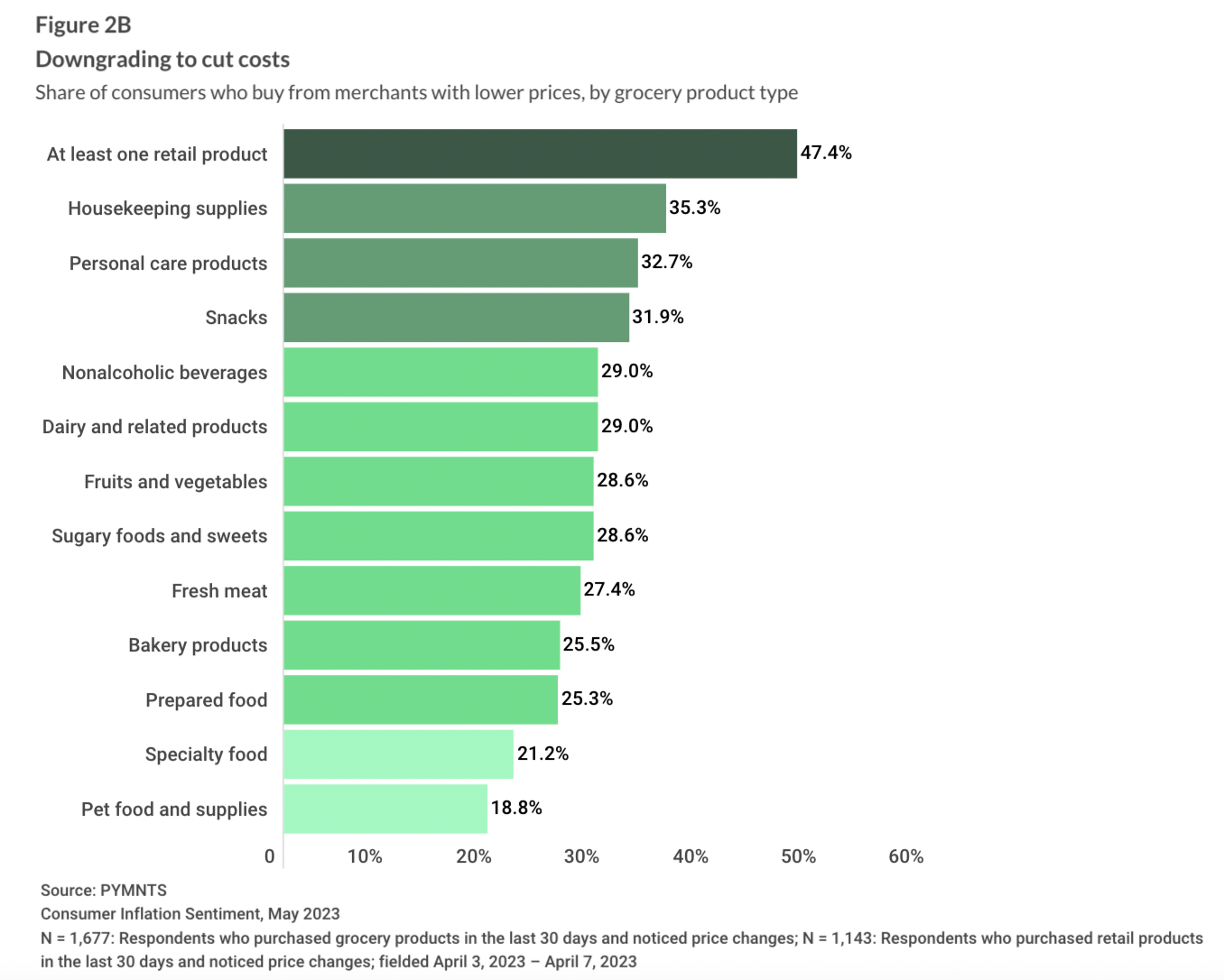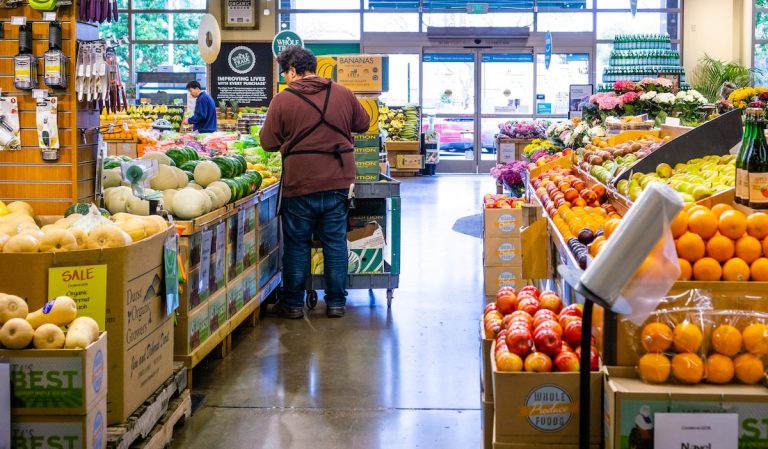By the Numbers
Research from the latest installment of PYMNTS’ Consumer Inflation Sentiment series, “Consumer Inflation Sentiment Report: Consumers Cut Back by Trading Down,” which drew from an April survey of more than 2,000 U.S. consumers, revealed that 47% of all shoppers have switched to a less expensive merchant for at least one grocery product.
Thirty-five percent have done so for housekeeping supplies, 33% for personal care products and 32% for snacks. Yet fewer consumers are willing to trust discount merchants when it comes to the outer aisles of the grocery store. Only 29% are trading down for dairy or fruits and vegetables, 27% for fresh meat and 25% for prepared food.

The Data in Action
Certainly, consumers are less picky when it comes to center-aisle items, often not even needing to see the products before purchasing them. This trend is evident in their shift to eCommerce options such as Amazon for many of their CPG needs.
Amazon CEO Andy Jassy noted this trend on the company’s earnings call last month.
“We have actually quite a large grocery business,” Jassy said. “It’s just an unusual … grocery business, very much like how the mass merchandisers got into grocery 25, 30 years ago, where the selection are items that are not temperature controlled. … In this current environment where consumers are being cautious about what they spend and finding ways to trade down in different product variations, consumables have stayed very, very strong.”
Advertisement: Scroll to Continue
Overall, consumers are certainly looking for less expensive options. In an interview with PYMNTS, Sean Turner, co-founder and chief technology officer at retail technology company Swiftly, noted that shoppers have become more deliberate about how they choose where they purchase their groceries.
“Shoppers are clipping more coupons,” Turner said, adding that they spend more time planning their grocery shopping trips. “They’re really trying to compare prices across different stores. They might go to [different retailers’ apps] and search for the same product there to see where it’s cheapest or where they can get a coupon or a discount.”





